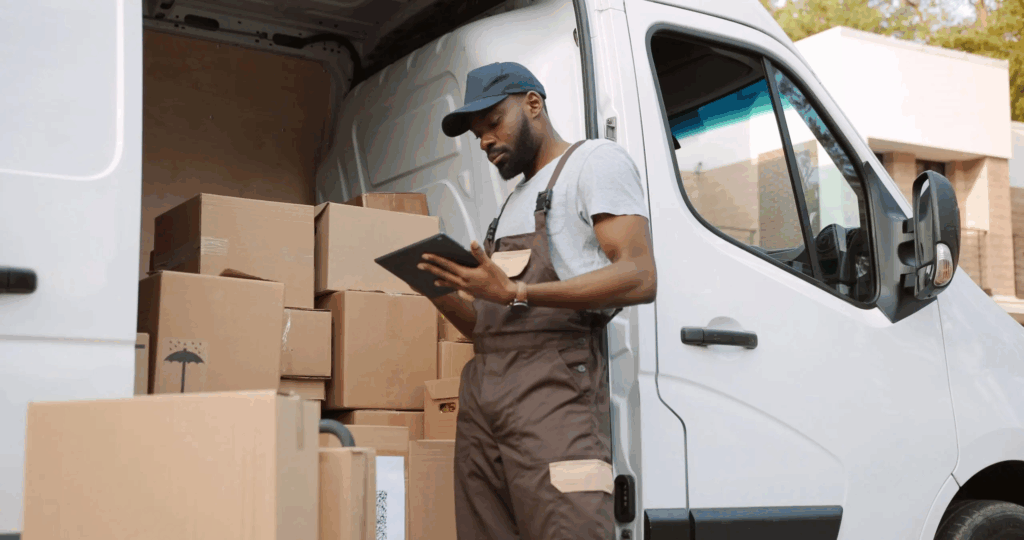Global Logistics Track Platform and the Psychology of Trust in DTC
A global logistics track platform is more than technical tools. For direct-to-consumer (DTC) brands, they are the invisible bridge connecting an online order to a customer’s door. Yet beyond data and delivery times, they play a deeper role—they shape trust. Logistics visibility affects how safe customers feel after they buy. The clearer the journey, the stronger the trust, and the higher the chance they will return to shop again.

1. Why Trust Defines DTC Success
1.1 DTC Relies on Direct Relationships
Unlike traditional retail, DTC brands remove intermediaries. They own the customer relationship fully—from product discovery to final delivery. This means every stage matters. If tracking fails, the entire brand feels unreliable.
1.2 Post-Purchase Experience Matters More Than Ads
Brands often spend heavily on marketing, but neglect what happens after checkout. Research shows that the delivery stage is where trust is either strengthened or broken. A verified global logistics track platform ensures customers do not feel abandoned once payment is made.
1.3 Repeat Purchases Depend on Security
Psychology teaches us that people buy repeatedly when they feel secure. Security is not only about money but also about confidence that an order will arrive as promised. Transparency in logistics gives that confidence.
2. The Psychology Behind Logistics Transparency
2.1 Reducing Anxiety
Waiting for a package triggers uncertainty. Customers think: “Has it shipped? Is it stuck at customs? Will it be late?” Each unanswered question increases stress. A reliable tracking system lowers anxiety by offering real-time answers.
2.2 Creating a Sense of Control

Humans like control. Even if delivery times remain the same, seeing progress makes customers feel involved. A global logistics track platform that updates frequently gives buyers this sense of control.
2.3 Reinforcing Brand Integrity
When updates match reality, customers believe the brand is honest. If tracking shows unrealistic or false steps, trust collapses. Authentic transparency reinforces integrity—customers reward this with loyalty.
2.4 Positive Anticipation
Psychologists note that anticipation can be enjoyable if managed correctly. Tracking platforms turn waiting into excitement by showing progress milestones. Each update signals progress, building anticipation for the final delivery.
3. How Tracking Affects Customer Behavior
3.1 Lowering WISMO Inquiries
“Where is my order?” calls consume customer service time. With accurate tracking, these calls decrease. This not only saves costs but also shows that the brand respects customer time.
3.2 Higher Review Scores

Customers who feel informed leave better reviews. Positive shipping experiences often appear in ratings, even when products are average. Verified platforms can raise star ratings indirectly.
3.3 Building Emotional Loyalty
Trust is emotional. Customers who feel cared for during delivery associate positive feelings with the brand. Over time, this emotional loyalty leads to repeat purchases without hesitation.
3.4 Influence on Word of Mouth
People share both bad and good experiences online. A smooth tracking journey becomes part of word-of-mouth marketing. One customer praises “flawless delivery updates” as attracting new buyers more effectively than ads.
4. Why Verification of the Platform Is Essential
4.1 Protecting Customer Data
Unverified systems may leak addresses or payment details. Data breaches destroy trust instantly. Verified global logistics track platforms protect sensitive information with secure encryption.
4.2 Ensuring Carrier Accuracy
Some platforms claim to track thousands of carriers but actually deliver generic updates. Verification confirms whether integrations are real or fake. Customers notice quickly when updates are unreliable.
4.3 Avoiding False Promises
Brands that use illegitimate platforms risk showing fake delivery times. Broken promises damage reputation. Verifying the platform avoids this long-term risk.
4.4 Building Long-Term Brand Value
Trust accumulates. One poor delivery experience may cost a lifetime customer. By verifying tracking providers, DTC brands protect long-term brand value.
5. Elements of a Trustworthy Tracking Platform
5.1 Real-Time Visibility

Legitimate platforms provide frequent updates. Customers should see every step, not just “shipped” and “delivered.”
5.2 Multi-Carrier Coverage
Global buyers demand coverage across borders. A strong platform connects with international couriers, postal networks, and last-mile carriers.
5.3 Branded Tracking Pages
A tracking page is not just technical—it is marketing. Custom pages reinforce brand identity and reduce reliance on third-party carrier sites.
5.4 Predictive Updates
Advanced systems use AI to predict delays. By informing customers early, brands reduce frustration.
5.5 Secure Data Management
Compliance with GDPR or CCPA proves that the platform respects customer privacy. Brands must prioritize this to avoid trust breakdowns.
6. Case Studies of Trust Gained and Lost
6.1 Case A: Weak Platform, Broken Trust
A skincare DTC brand integrated a cheap, unverified platform. Packages often showed “in transit” for weeks without real updates. Customers posted angry reviews, and repeat orders dropped by 30%.
6.2 Case B: PostalParcel, Verified Growth
A DTC lifestyle brand partnered with PostalParcel to verify and manage its global logistics track platform. With real-time updates across multiple carriers, customers always knew where their orders were. PostalParcel’s branded tracking pages built stronger trust, while predictive alerts reduced delivery complaints. Within six months, repeat purchases rose by 25%, and WISMO inquiries dropped by 60%.
7. Practical Steps for DTC Brands

7.1 Research Before Integration
Check business registration, online reputation, and compliance standards. Avoid platforms without transparent ownership.
7.2 Run Pilot Shipments
Never integrate at full scale before testing. Pilot shipments reveal how accurate and user-friendly the system really is.
7.3 Train Support Teams
Even the best platform requires trained staff. Ensure customer service agents can guide buyers through the tracking system smoothly.
7.4 Monitor Customer Feedback
Surveys and reviews show how customers perceive tracking. Use this data to refine logistics strategies.
7.5 Re-Evaluate Annually
The logistics world changes quickly. Regular audits ensure your chosen platform remains secure, accurate, and competitive.
8. The Connection Between Transparency and Repeat Purchases
8.1 First Impressions After Checkout
The checkout process ends the sales funnel but begins the trust test. Transparent tracking provides the first post-purchase impression.
8.2 Reinforcement Through Updates
Each update is a micro-commitment from the brand. Customers interpret it as a promise kept, reinforcing trust step by step.
8.3 Reducing Return Fear

Some buyers hesitate to purchase again if their delivery experience was unclear. Transparent logistics eliminates this hesitation.
8.4 Strengthening Lifetime Value
Repeat purchases build customer lifetime value (CLV). Verified tracking platforms ensure these purchases keep flowing by protecting trust.
9. Future of Trust in Global Logistics
9.1 Predictive Analytics
Next-generation platforms will show “where” and “what next.” Predictive models will inform customers before delays happen.
9.2 Personalized Tracking
Platforms will offer updates tailored to customer preferences—SMS, email, app notifications—enhancing control and reducing anxiety.
9.3 Sustainability Metrics
Customers increasingly care about eco-friendly delivery. Future platforms may display carbon footprint per shipment, boosting brand credibility.
9.4 Integration With Customer Engagement
Tracking pages will evolve into engagement tools, offering discounts, brand messages, or loyalty rewards during waiting periods.
Conclusion
For DTC brands, trust is the foundation of growth. A global logistics track platform is no longer just a back-end necessity—it is a psychological tool that shapes how customers feel after every purchase. Transparency lowers anxiety, builds a sense of control, and transforms waiting into positive anticipation. By verifying the legitimacy of these platforms and treating them as part of the customer experience, DTC brands can strengthen loyalty, raise repeat purchases, and turn logistics into a competitive advantage.
Industry Insights
news via inbox
Nulla turp dis cursus. Integer liberos euismod pretium faucibua







